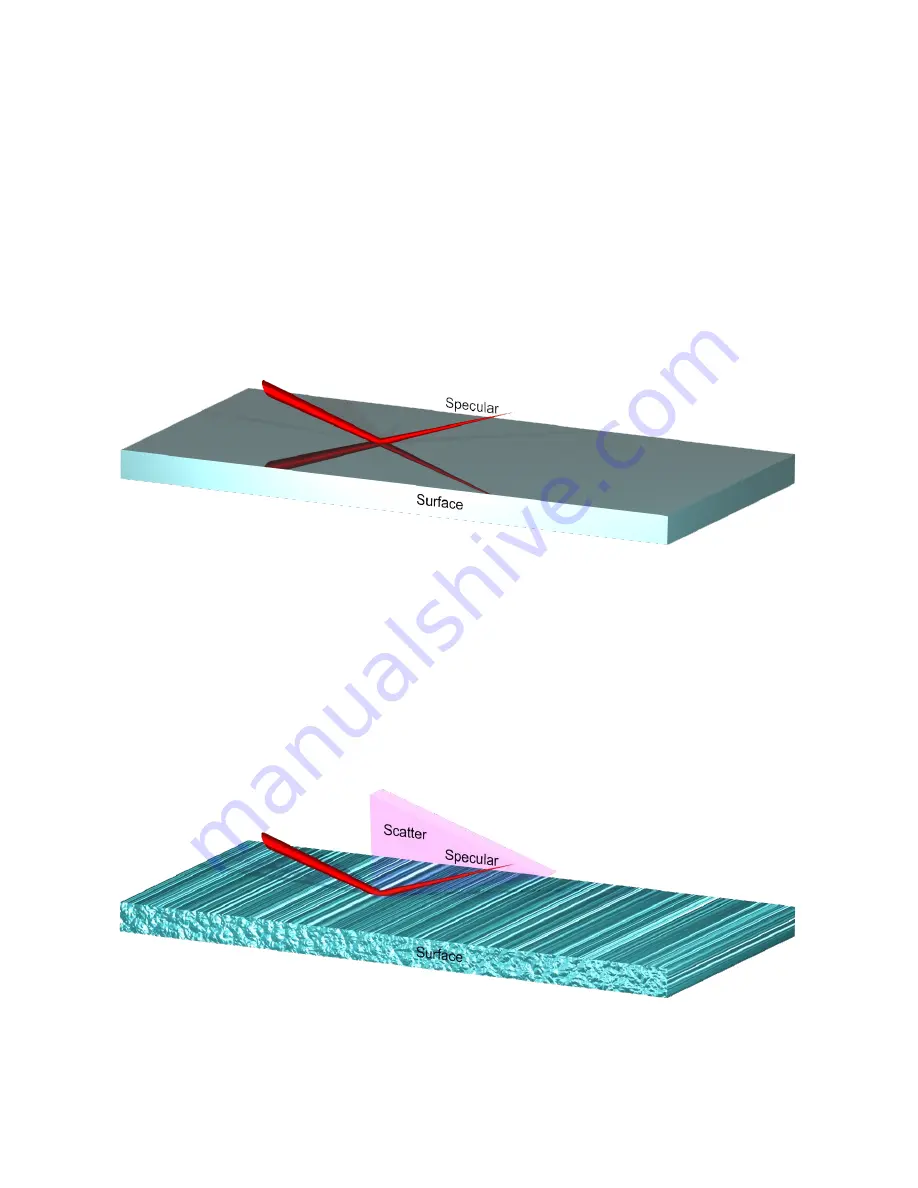
6212A Manual Version 14.56.docx
Page 51 of 58
Appendix D - Calibration Procedures
Theory - Measurement and Calibration
Measurement of Roughness
Lasercheck technology is based on measuring change in properties of a laser beam reflecting from a surface.
When a laser is shone on a perfectly smooth mirror like surface there will be a clean “specular” laser reflection
off that surface.
If a surface is not perfectly smooth and has some roughness the laser reflection will contain some diffuse
reflection (scatter) in addition to the specular reflection. The “shape” of the pattern of scattered light is affected
by the microscopic surface roughness pattern created by the machining operation used on the surface. Two
simple examples to illustrate surface pattern affecting roughness pattern:
1)
A directional belt sanding operation creates a roughness pattern on a surface that is highly directional.
This directional roughness pattern generates a scattered light reflection pattern that is also highly
directional, visually appearing like a 2D “stripe” of scattered light.






















